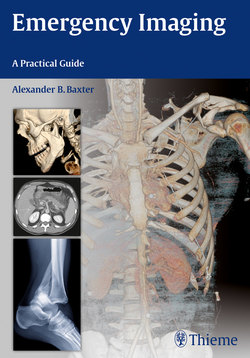Читать книгу Emergency Imaging - Alexander B. Baxter - Страница 101
На сайте Литреса книга снята с продажи.
Оглавление88Emergency Imaging
Infection/Inammation
• CT Face or Neck with Intravenous Contrast
–Tonsillitis/pharyngitis
–Parapharyngeal or retropharyngeal abscess
–Dental or periodontal disease with abscess
–Sialadenitis
–Orbital cellulitis
–Infectious or reactive adenopathy
(suppurative adenitis, mycobacterial disease, mononucleosis)
Mass
• CT Face or Neck with Intravenous Contrast
• MRI with Gadolinium
–Lymphoma
–Metastatic head and neck carcinoma –Parotid or submandibular neoplasm
–Developmental cysts (thyroglossal duct cyst, branchial cleft cyst)
◆ Clinical Presentations and Dierential Diagnosis
Clinical Presentations and Appropriate Initial Studies
Trauma
• CT Face or Neck without Intravenous Contrast
–Frontal sinus/orbital roof fracture
–Nasal or nasal septal fracture
–Naso-orbito-ethmoid fracture –Zygomaticomaxillary complex fracture
–Le Fort fracture
–Orbital wall (blowout) fracture
–Globe rupture
–Orbital hematoma
–Temporal bone fracture
–Skull base fracture
–Carotid or vertebral vascular injury
–Larynx fracture
Fig. 3.2Cervical lymph node levels. Level 1A nodes are submental and lo-cated between the digastric muscles. Level 1B nodes are submandibular and located lateral to the digastric and ante-rior to the posterior aspect of the hyoid bone. Level 2A, 2B, 3, and 4 are nodes of the jugular chain. Level 2 nodes are above the hyoid, Level 3 nodes are between the hyoid and cricoid carti-lages, and level 4 nodes are below the cricoid. Level 2B nodes are posterior to the jugular vein but anterior to the margin of the sternocleidomastoid. Level 5 nodes are all posterior to the sternocleidomastoid margin and make up the spinal accessory chain, with level 5A nodes above the cricoid and level 5B nodes below it. Level 6 and 7 nodes are paratracheal and paraesophageal.
